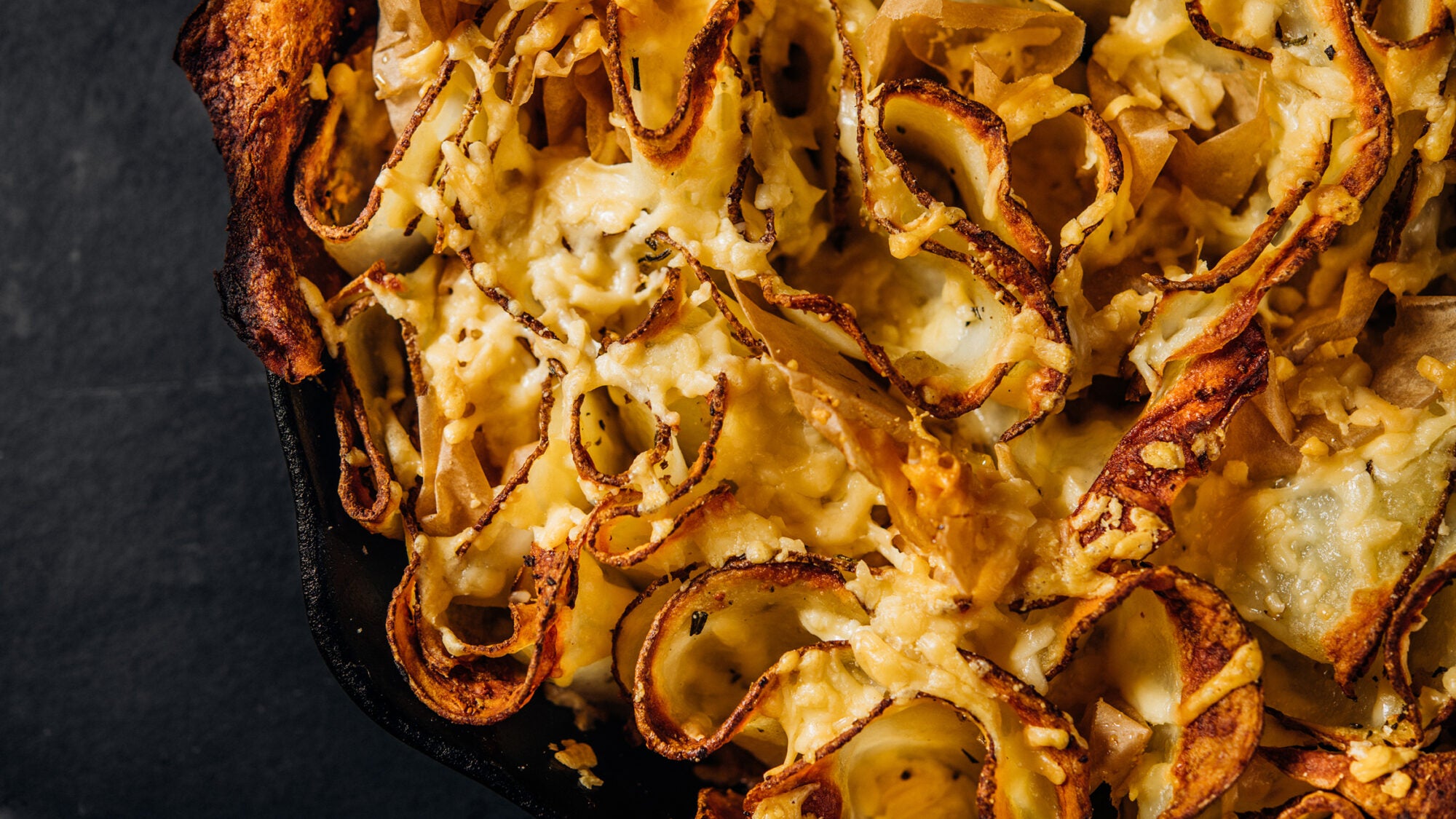
There’s always a choice or six when confronting the bags and bins at the friendly farmers’ market or grocery store.
There’s a lot to consider when confronting the bins of grocery store potatoes. And honestly, how many times have you winged it completely with that choice — grabbing that bag from Idaho and hoping for the best, with the evening’s picnic salad or holiday mash hanging in the balance? Potatoes are pretty user-friendly, but they have specific qualities worth learning about if you want to make, for example, the perfect rösti.
One type of potato works better with deep-frying, while another should be avoided at all costs when making latkes. And then there’s the most flexible potato of all. And there are those purple ones! What’s up with those?
At the supermarket, you will undoubtedly find three main types of potato: russet, red bliss, and Yukon Gold. And each falls (mostly) into one of two categories: starchy or waxy. There are, of course, other types of specialty potatoes to think about: fingerling potatoes (semi-waxy and great for roasting), German Butterball potatoes (starchy and perfect for a creamy and particularly sweet mash), and peewees (great for soup). But most of our cooking revolves around the big three, and if you master these, the others will all make sense.
The starchy potato is what it sounds like. When baked and cracked open, the flesh tastes chalky and dry, but it can absorb flavors incredibly well. What this means is that the starchy potato can take on a lot of fat. Enter the russet potato, your go-to for mashed potatoes at Thanksgiving and for French fries. The best for potato gnocchi, potato pancakes, and extra-crispy hash browns. Be mindful, however, that it will fall apart when cooked through—and dissolve completely into a starchy mush when cooked beyond that—so it makes a lousy addition to brothy soups where chunks are the goal.
Waxy potatoes are lower in starch and higher in moisture, and the waxier the potato, the less likely it is going to fall apart when cooked. Red bliss is a waxy potato, and while it’s a little bit of a dated throwback to the ’70s and ’80s, it’s really great to roast and braise, and it makes a welcome addition to soups and stews, where it will hold up to the long cooking time and keep its form.
Yukon Golds are somewhere in between waxy and starchy, and sometimes they’re called an all-purpose potato (at least that’s what Martha Stewart calls them, and nobody wants to argue with Martha). They are the great utility player in the potato game, with a sweet flesh and tender skin, great for roasting, boiling, and even mashing. In fact, Daniel often uses YGs for his mashes. They are sweeter and offer a little more flavor, and you can mash the skin right in there (unlike the russets, which need to be peeled). In restaurants, they use a stand mixer with the paddle attachment to mash potatoes, and you can do the same with your countertop KitchenAid, with the added bonus that the paddle will mash most of the skins and save you some time on peeling if you choose to go with Yukons.
This story is adapted from Food IQ: 100 Questions, Answers, and Recipes